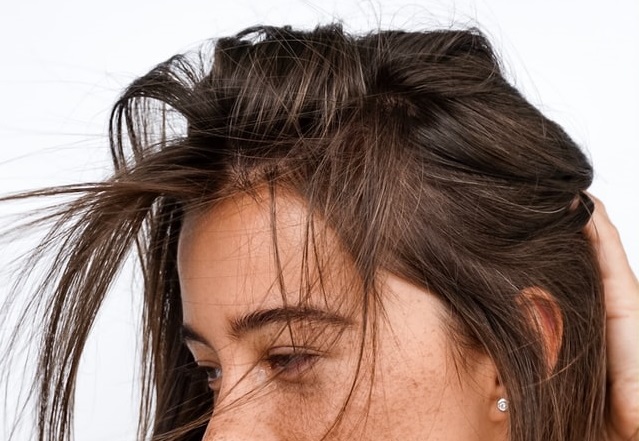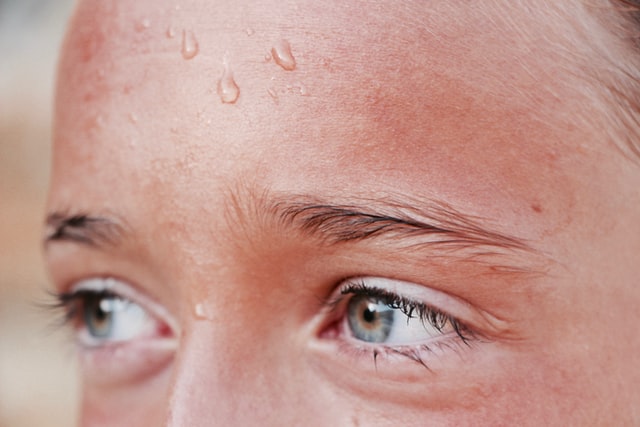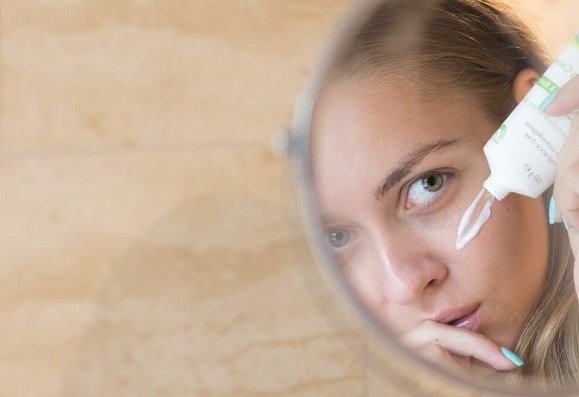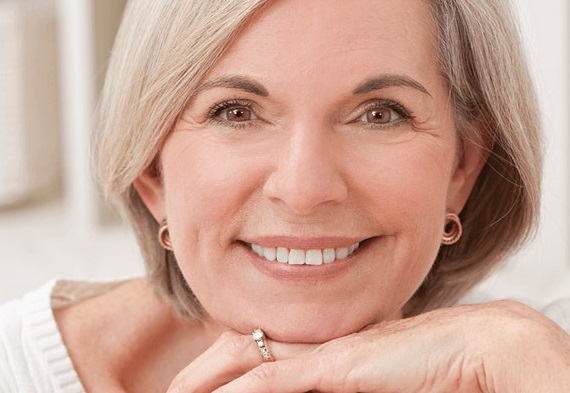5 Common Skin Conditions and How To Treat Them
with guest contributor Ann Chamberlain
Skin conditions can affect confidence and mood leading to low self-esteem and often stress, which can sometimes exacerbate the problem. Most of us notice things about ourselves in the mirror that we aren’t impressed by. Probably far more than anyone else would by the way. However, sometimes the solution to an issue is much simpler than we think, and it may just provide a much needed boost in confidence.
Local nurse Ann Chamberlain specialises in aesthetics at Roseneath Skin Clinic, and here she shares her knowledge of these five common skin conditions with us, and the best ways to treat them.

1. Pigmentation and Discolouration
Pigmentation ranges from freckles and age or sun spots to what the medical world calls 'disfiguring hyperpigmentation', such as vitiligo.
Pigmentation occurs due to an increase in melanin in the skin, sometimes by an increase in the number of pigment-producing cells (melanocytes). This is often due to sun damage; UV light aggravating hormonal melasma or speeding up the production of melanin or triggering it to be produced in clumps. Anyone can experience pigmentation issues anywhere on the body, but it is more common in darker skin types and in more exposed areas, such as the hands, face and chest. Sometimes it's hormone related, like Melasma, known as the ‘mask of pregnancy’, which typically presents as a tan or dark facial skin colouring that is patchy, symmetrical and usually affecting the cheeks and top lip. Post-inflammatory hyperpigmentation can occur after skin injury or trauma, medication or inflammatory disease such as acne.
Treatment options
Firstly, pigmented lesions should be assessed and any suspicious lesions should be referred to your GP or dermatologist. Mole mapping is a new service available if you have lots of moles or a history of skin cancer. Often better to be safe than sorry. Otherwise, most pigmentation issues don’t need treatment and are harmless. However, many can be easily addressed for cosmetic reasons.
Laser or IPL work by releasing light of a specific wavelength in short pulses, which can be readily absorbed by the high concentration of melanin in pigmented lesions. This treatment is especially effective or sun spots, freckles and age-related pigmentation; successful removal can sometimes occur with just one treatment.
Medicated skincare products and peels are suitable for all skin types, including black and Asian skins. Active ingredients useful to target pigmentation include kojic acid, vitamin C, vitamin A (Retinol) and licorice root extract. These are particularly useful for post-inflammatory hyperpigmentation and melasma.
2. Rosacea, Thread Veins and Haemangiomas
Rosacea is characterised by facial redness or flushing, usually affecting the cheeks, nose, chin and forehead. Individuals can suffer intermittent flushing in response to triggers or constant redness. Sometimes open pores, spots or thread veins are an issue. In severe cases there can be textural changes, such as thickened skin on the nose, or it can affect the eyes (ocular rosacea). Historically termed ‘curse of the celts’, rosacea is more common in fair-skinned people, but any men or women can be affected. Rosacea is an inflammatory issue, although the exact cause remains unknown. Genetics, excessive sebum, hormones and lifestyle (particularly sun damage) are likely to contribute. Having chronically inflamed skin impairs the skin barrier function leading to sensitive skin and discolouration. Risk factors for developing thread veins include genetics, steroid cream use, injury to the area, pregnancy or oestrogen treatment.
Thread veins (broken veins, spider naevi etc) can occur anywhere, but most commonly on the face (particularly nose and cheeks), chest and legs. Medically known as telangiectasia, this is not dangerous, but can make people feel self-conscious. These tiny, often dilated blood vessels in the top layer of the skin become visible and appear as a spidery pattern, single red line or even just a red dot. Occasionally slightly raised, colours range from red or pink, to purple or blue for larger, deeper vessels.
Treatment options
Early treatment and management of rosacea is recommended to reduce the risk of long-term textural changes. Certain prescription creams and tablets from your GP can help if suitable, although many people want to avoid long-term antibiotics. Skincare products containing Vitamins A, C and E, anti-oxidants, lactic acid can be used to address sebum control, inflammation, cell-turnover and damaged skin barrier function for long-term control of symptoms. Daily sunscreen all year is essential.
Laser treatment is highly successful to treat thread veins, spider naevi, haemagiomas – even port wine stain type birth marks. Often only one or two treatments are needed for removal. Laser can also be used for long-term control of rosacea symptoms.

3. Excessive Sweating
Medically known as hyperhidrosis, this can be an embarassing condition for both men and women of any age and causes significant emotional distress as a result. It usually affects the hands, feet, underarm or scalp.This type of sweating is not necessarily linked to exercise or heat; and anxiety from the sweating can make the situation worse.
Excessive sweating is sometimes an inherited condition, or it can be caused by medical problems such as thyroid or pituitary gland disorders. Seek medical attention if heavy sweating is accompanied by light-headedness, chest pain or nausea. Often there is no known medical cause.
Treatment options
A useful starting point is consulting your GP to rule out medical or medication related causes - and trying a prescription antiperspirant. Wearing clothes of natural materials and changing them regularly can help. More invasive measures include sweat gland removal, nerve surgery or microwave therapy in extreme cases.
Botulinum toxin, commonly known as Botox, injections are an extremely safe and effective treatment that can stop excessive sweating for 9-12 months at a time. This highly refined, purified substance is applied with a tiny sterile needle to act specifically on the sweat glands in the area treated. There is negligible down-time and breaking the anxiety cycle of sweating and being nervous of sweating can lead to patients feeling calmer and more in control.
4. Acne
Acne is a very common condition that affects both adults and teenagers. It is usually characterised by chronic inflammation, over-production of sebum and altered skin cell turnover. It usually manifests as blackheads and whiteheads (comedones), spots and red inflamed skin.
Acne bacteria is present on all our skin, usually in harmless amounts. However, in an environment of excessive oil these bacteria multiply and lead to red, painful spots. Hormones can stimulate sebaceous glands to produce too much oil and mix with the surplus dead skin cells to plug pores in the skin. This plug of dead skin turns black from the air and is seen as a blackhead.
Treatment options
Sometimes nothing! Eventually acne often gets better by itself, although there is a risk of scarring and post-inflammatory hyperpigmentation, as well as a recognised risk of psychological damage, caused by low-confidence and self-esteem. Your GP can prescribe options such as antibiotics, oral contraceptive pill or prescribed gels or tablets that can help.
Laser treatment can also effectively treat both active and acne scarring. The laser targets overactive sebaceous glands, greatly reducing the number and severity of active lesions, lessening inflammation and breakouts. The light stimulates new collagen to improve skin texture and can improve red or brown areas often left behind after acne has resolved. Medical skincare products and peels can address over-production of sebum, cell turn-over and discolouration. Chemical peels are especially good for mild acne, with little or no downtime.

5. Expression Lines
Over the years many changes occur within the skin’s structure caused by the passing of time, UV exposure, lifestyle factors and genetics. Collagen and elastin fibers are proteins in the deep layer of the skin (dermis), which form the ‘scaffolding’ of your skin’s structure giving it the ability to stretch. Hyaluronic acid is a naturally occurring substance in the skin’s connective tissue that holds a huge amount of water to keep the skin lubricated and looking vibrant. As we age, these collagen, elastin and hyaluronic acid cells are damaged and gradually depleted. We lose 1-2% of collagen each year. Women lose more after the menopause.
Treatment options
Prevention is better than cure in this case. And there are many ways to do this. You should start early on with a good skin care regimen with a quality sun screen at top of the list. Certain sun screens not only protect against UVA and UVB, but also against damage from blue light and Infra-Red radiation. Ingredients such as retinol can stimulate collagen production, and vitamin C is anti-aging and brightening.
Anti-aging injections with botulinum toxin remain the most popular cosmetic procedure. And these days, results don’t have to give you a ‘frozen’ look! This substance works by temporarily blocking chemical signals between nerve cells, to reduce the strength of specific muscles. Results are evident in less than 2 weeks and you can tailor effects to personal choice. From a gentle softening of just one frown line to a full treatment of the upper face to smooth out expression lines, this treatment is popular for a reason.
Temporary dermal fillers are made of hyaluronic acid and are used to give an instant smoothing out of lines or re-contouring or volumising of cheeks or jawlines. Subtle products, such as Profhilo, can be used to give overall dermal hydration for a more natural effect.
Fractional laser skin resurfacing and micro-needling tackle lines and wrinkles, poor texture or scaring by stimulating collagen renewal. PRP (platelet-rich plasma), or stem cell therapy, harnesses the natural healing powers in your own blood to stimulate collagen and elastin recovery.

Imagery: Roseneath Skin Clinic
The qualified medical professionals at Roseneath Skin Clinic can assess and advise you on your skin concerns; and explain the most suitable treatment options. If you are interested in finding out more information, Roseneath are hosting an event on the 14th May, 360 Degrees of SKIN. Visiting and local skin care experts are providing informative talks and the opportunity to ask questions and take advantage of special offers on the day.

